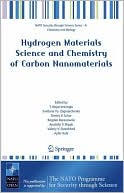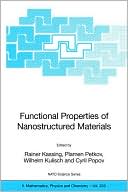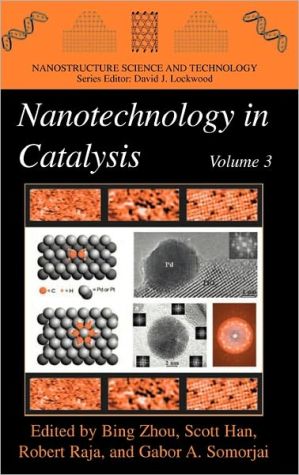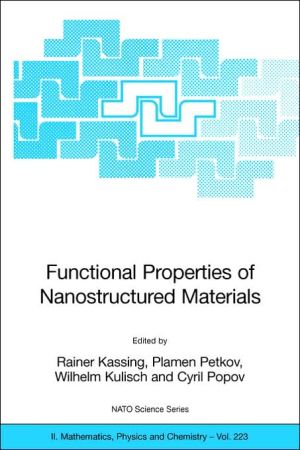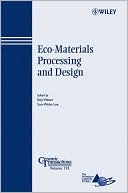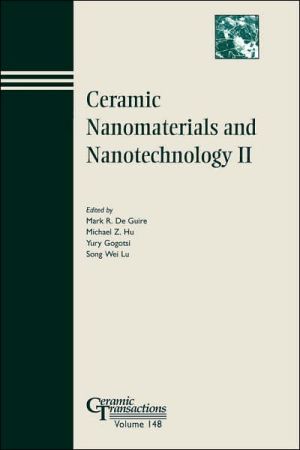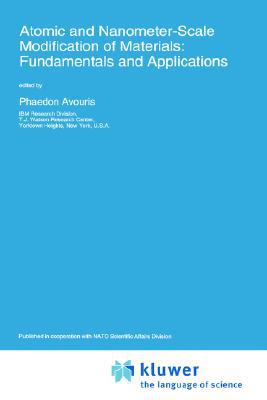Hydrogen Materials Science and Chemistry of Carbon Nanomaterials
Search in google:
The energy arteries of the corporate body of mankind are still fed mainly by fossil fuels; but they are in danger of running dry soon unless new energy sources are made available. One of the most important as well as the most ecologically pure power source is hydrogen, that constitutes the heart of hydrogen power engineering and considered as a future alternative to fossil power sources. The chemistry of carbon nanomaterials and hydrogen materials science will play an important role in hastening the conversion to the Hydrogen Energy System. In this connection the research and application of materials capable of interacting actively with hydrogen, its accumulating and storing will be of the utmost significance. This is of particular actuality for creation of mobile energy sources both for mobile telephones and for hybrid electric cars that are developed by all large car manufacturers of the world. In this connection the hydrogen capacity of carbon nanostructural materials, such as fullerenes, nanotubes, nanofibers and other nanostructures, has aroused a special interest of researchers. Hydriding metals, alloys, nanocarbon and composite materials can store hydrogen safely at relatively low pressures and temperatures. Very many other applications are also possible – such as heating and cooling, waste heat storage, pumping, pressurizing, heat-pumping, hydrogen purifying, deuterium separation, electricity production, etc. As a source of ‘clean’ energy, hydrogen is also going to be the permanent answer to another global problem caused by utilization of fossil fuels, such as the greenhouse effect, climate change, acid rains, ozone layer depletion, pollution and oil spills.
Phase transformations in carbon materials1Hydrogen solubility in FCC fullerite25Controlling role of electron concentration in plasma - chemical synthesis45Oxygen source for isolated fuel cells53Microscopic characteristics of H diffusion and diffuse scattering of radiations in H.C.P.-Ln-H (from the data on electrical-resistivity relaxation)59Investigation of content of endometallofulerenes extracts67An overview of hydrogen storage methods75Alumo- and borohydrides of metals : history, properties, technology, application105Structural - phase transformations in titanium - fullerene films at implantation of boron ions115Field emission investigation of carbon nanotubes doped by different metalsDevelopment of methods of deposition of discontinuous nickel coatings on powders of AB5 type alloys131XRD patterns of cathode deposits formed in electric arc sputtering Zr-Me-graphite electrodes137Metal hydride accumulators of hydrogen on the basis of alloys of magnesium and rare-earth metals with nickel143Synthesis of nanotubes in the liquid phase147Mossbauer study of carbon nanostructures obtained on Fe-Ni catalyst153Determination of an optimum performance of PEM fuel cell based on its limiting current density159Photoinduced modifications of the structure and microhardness of fullerite C[subscript 60]167Investigation on the carbon special form graphitic nanofibres as a hydrogen storage materials177Heterometallic fullerides of transition metals with the composition K[subscript 2]MC[subscript 60]185Characterization of nanoparticles processed by arc-discharge between carbon electrodes containing Ni[subscript 2]Y catalyst193Protection of securities by the application of fullerenes203Spectrophotometric analysis of C[subscript 60] and C[subscript 70] fullerenes in toluene solutions207Effect of the nature of the reactor wall material on morphology and structure of products resulted from arc graphite sputteringStudy of thermodynamic parameters of hydrogen gas by grapho-analytic method225Simulation of operation heat or cold-making unit with hydride heat pump233Quantum-chemical investigations of single wall carbon nanotube hydrogenation processes243Quantum chemical investigations of the growth models of single wall carbon nanotubes on polyhen rings, fullerenes and diamond surface259Covalent-binding carbon nanotube : simulation of formation mechanisms and energy characteristics279To the theory of formation in cast iron of spherical graphite283Modelling of dehydration and dehydrogenation in pure and Ba-, Ca-, Sr- or Y-modified zirconia nanolayer291Metallcontaining nanoparticles in carbochain polymeric matrixes299X-ray structural study of deposit formed on electric arc sputtering of Me[subscript 1]-Me[subscript 2]-C composites307Effect of hydrogen on delayed fracture of HCP -steels based on Fe-Mn solid solution313System combined automobile feed on carbon nanostructures with hydrogen adsorbate application319T-nanoconstructions on the (0001) - surface of graphite based on carbon (6.6) - nanotubes325Three - dimensional polymerized cubic phase of fullerenes C[subscript 2[delta]]329Nanostructure and electronic spectra of Cu-C[subscript 60] filmsHydrogenated amorphous silicon carbide films as perspective tribological coatings and semiconductor layers339Vibrational spectra and molecular structure of the hydrofullerenes C[subscript 60]H[subscript 18], C[subscript 60]D[subscript 18], and C[subscript 60]H[subscript 36] as studied by IR and Raman spectroscopy and first-principle calculations347Hydrogen segregation in the residual stresses field357Nanoparticles of metals and oxides on surface of carbon fibers are effective catalysts of chemical transformations of epoxy oligomers363Theory of transport phenomena on plasma - metal hydride interface375The ultradisperse formations of free carbon in alloys of iron383Simulation of fullerene irradiation and fragmentation by particle beams387Lithium in nanoporous carbon materials produced from SiC391Scientific-technical prerequisites in Ukraine for development of the wind-hydrogen plants399Synthesis and structural peculiarities of the exfoliated graphite modified by carbon nanostructures405Modeling of TDS-spectra of dehydrating415Some schematics of use of hydride devices in the automobile427Electronic-microscopic investigation of nanoscale products of catalytic pyrolysis of toluene437Application of the metal hydride activation effect of hydrogen isotopes for plasma chemical technologies447Vibrational spectra of C[subscript 60] polymers : experiment and first-principle assignment457Feasibility of hydrogen energy production through natural gas steam reformation process in the UAE467Isotope effects in the quasielastic Mossbauer absorption of [superscript 57]Fe in NbH[subscript 0.78] and NbD[subscript 0.76]473Electrical resistance of binary ordered alloys with HCP structure in the presence of impurity atoms or thermal vacancies481Hydriding properties of magnesium-salt mechanical alloys489Hydrogen sorption and electrochemical properties of intermetallic compounds La[subscript 2]Ni- and La[subscript 2]Ni[subscript 6]Co503Hydride phases in Sm[subscript 2]Fe[subscript 17]- NH[subscript 3] system511Optical investigation of hydrogen interaction-deintercalation processes in layered semiconductor [gamma]-InSe crystals519Quantum topology and computer simulation of confined hydrogen atom inside spherical-form gap531Calorimetric investigation of the hydrogen interaction with Ti[actual symbol not reproducible]Zr[actual symbol not reproducible]Mn[actual symbol not reproducible]V[actual symbol not reproducible]539Interaction in NbVCo-H[subscript 2] and NbVFe-H[subscript 2] systems under hydrogen pressure up to 2000 atm547Effect of hydrogenation on spin-reorientation phase transitions in R[subscript 2]Fe[subscript 14]BH[subscript X] (R=Y, Ho, Er) compounds553The cluster growth mechanism of nanostructured diamond557Specific features in thermal expansion of YFe[subscript 11-X]Co[subscript X]TiH single crystals563Study of structure, hydrogen absorption and electrochemical properties of Ti[subscript 0.5]Zr[subscript 0.5]Ni[subscript y]V[subscript 0.5]Mn[subscript x] substoichiometric laves phase alloys569Effect of stress on accumulation of hydrogen and microstructure of silicon co-implanted with hydrogen and helium579Hydrogen storage materials and their maximum ability on reversible hydrogen sorption593The study of changes of physico-mechanical properties of materials in a condensed state under hydrogen influence using fault detection acoustic microscopy methods603Diffusion of hydrogen in amorphous, high deformed and nanocrystalline alloys617
